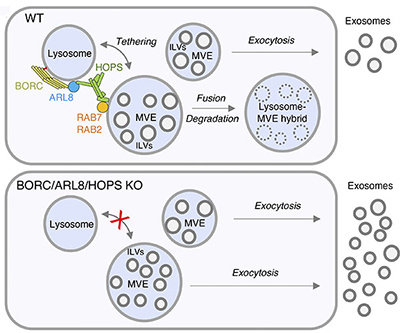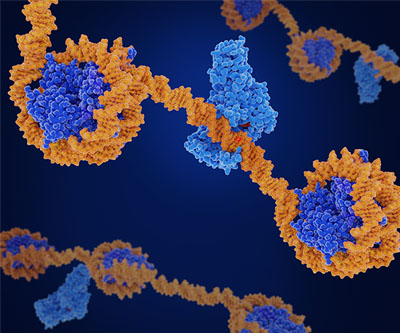Preventing Preterm Birth and Adverse Outcomes in Newborns

Preterm birth is a leading cause of infant death and long-term disability in the United States, and effective treatments to prevent preterm birth are needed.
Enhancing Exosome Secretion from Cells

Exosomes—small sacs of biomolecules released from cells—offer potential as disease biomarkers and treatments. One limitation to their therapeutic use is the low yields of exosomes that can be obtained from cultured cells under standard conditions.
Evaluating the Effect of “Forever Chemicals” on Uterine Fibroids

Many factors may influence changes in uterine fibroids during pregnancy, including exposure to chemicals that can disrupt hormonal signaling.
Exploring the Balance between the Production and Decay of Messenger RNA

Messenger RNA encodes the instructions for cells to make proteins. At any given time in a cell, there is a balance between the creation of these instructions and their destruction to tune gene expression.
Read about work from the Hinnebusch Lab on how a factor called Dcp2 regulates this balance.
Uncovering Genetic Regulators in Disease-causing Bacteria

Lyme disease, the most common vector-borne disease in the United States, occurs when a person is bitten by a blacklegged tick (or deer tick) infected with Borrelia burgdorferi, a bacterial pathogen.
Read about work from the Adams Group to identify new regulators in Lyme disease pathogen.
Exploring Gene Editing to Treat a Rare Disease

Although gene augmentation therapy is a promising treatment for the rare inherited disorder glycogen storage disease type-Ia (GSD-Ia), it might not be useful for growing children, and its effects might not last a lifetime.
Identifying Genetic Causes of Rare Vascular Conditions

Blood vessels are responsible for transporting oxygen throughout the body. Malformations in blood vessels can lead to a variety of health problems.
Read about work from the Sheppard Lab on using genetic sequencing to diagnose these rare conditions.
Understanding How Thyroid Hormone Influences Intestinal Development

Studying the process of metamorphosis from tadpole to frog can help scientists gain insights into how thyroid hormone regulates adult organ development in mammals.
Defining the Role of Bacterial Genes-Within-Genes

Genes-within-genes that produce a smaller version of a complete, full-length protein can serve important functions within a cell.
Identifying Early Childhood Risks for Suicide

Vulnerability to suicide may be linked to a variety of early childhood factors. Identifying these risk factors can help us better understand how vulnerability to suicide emerges and help inform programs to prevent suicide.
Understanding How Genes are Silenced During Development

During embryonic development, some genes must be silenced or “inactivated” at certain times and places. This silencing is orchestrated by Polycomb group proteins (PcG), which must be recruited to the gene in question.
Read about work from the Kassis Lab on how PcG recruitment is regulated.
Back to Research Highlights from the Division of Intramural Research.
 BACK TO TOP
BACK TO TOP